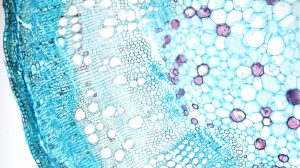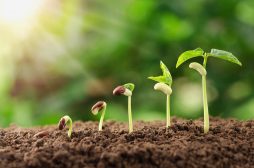Definition
noun, plural: steroidogeneses
The biosynthesis of steroid hormones from cholesterol by various cells, such as those of adrenal glands, ovaries, testes, etc.
Supplement
Steroidogenesis is a biological process of steroid hormone production. Apart from the natural production by living organisms, various steroids are also produced synthetically for their medical uses. Steroidogenesis, though, is restricted to the biological production of steroids.
Human steroidogenesis, in particular, is the production of steroid hormones in humans. Steroid hormones include (1) sex steroids (hormones), (2) corticosteroids (e.g. glucocorticoids and mineralocorticoids), and (3) anabolic steroids. Sex steroid hormones are androgens (e.g. testosterone), estrogens (e.g. estradiol), and progestogens (e.g. progesterone).
All steroidogenic cells that produce steroids start with cholesterol being converted first into a C-21 steroid, pregnenolone, within the mitochondrion. The cholesterol may be produced within the cell from acetate or from stored cholesterol ester within the lipid droplet. The cholesterol may also come from the circulating cholesterol-containing LDL. The cholesterol is taken in by the cell and transported into the mitochondrion. The conversion of cholesterol into pregnenolone occurs in the inner membrane of mitochondrion by the aid of the enzyme called CYP11A1 (also called side-chain cleavage enzyme).
The pregnenolone is converted to either 17-hydroxypregnenolone or to progesterone. The enzyme CYP17 is the enzyme involved in the conversion of pregnenolone to 17-hydroxypregnenolone whereas the enzyme 3 beta-HSD is the enzyme involved in pregnenolone → progesterone.
The major pathways of steroidogenesis are as follows:
Androgen, particularly testosterone, biosynthesis:
- Pregnenolone → Progesterone → 17-hydroxyprogesterone → Androstenedione ⇄ Testosterone
- Pregnenolone → 17-hydroxypregnenolone → 17-hydroxyprogesterone → Androstenedione → Testosterone
- Pregnenolone → 17-hydroxypregnenolone → Dehydroepiandrosterone → Androstenedione → Testosterone
Estrogen biosynthesis:
Progesterone biosynthesis:
- Pregnenolone → Progesterone
Corticosteroid biosynthesis:
Word origin: steroid + Ancient Greek génesis (“origin”)
See also:







